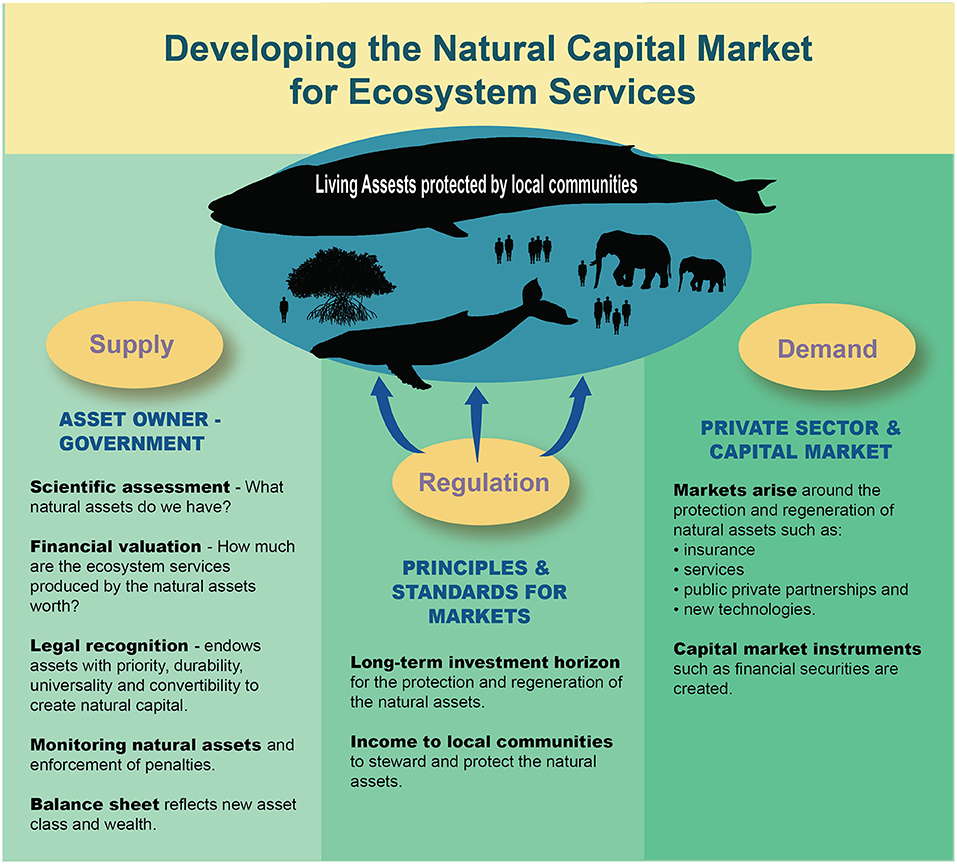The economics of investing in women and health – Nature

Report on Investment in Women’s Health and Alignment with Sustainable Development Goals
Introduction: The Imperative for Strategic Investment
Strategic investments in the health of women are identified as transformative catalysts for achieving key Sustainable Development Goals (SDGs), including SDG 5 (Gender Equality), SDG 1 (No Poverty), and SDG 10 (Reduced Inequalities). Current investment models are insufficient and inadequately structured to meet the complex, lifelong health needs of women. This report outlines the returns generated from properly designed investments and the critical role of health systems in this process.
Analysis of Investment Returns and SDG Linkages
Intrinsic Returns: Fostering a Virtuous Cycle for Development
A virtuous cycle of investment in women’s health yields significant intrinsic returns that directly support multiple SDGs. These include:
- Full Access to Education (SDG 4): Healthy women and girls are better able to pursue and complete their education, a cornerstone of sustainable development.
- Fair Labor-Force Participation (SDG 8): Proper health investment enables equitable participation in the workforce, promoting decent work and economic growth.
Instrumental Returns: Driving Economic Growth and Sustainability
Beyond individual empowerment, these investments produce instrumental returns essential for national and global progress:
- Economic Growth (SDG 8): Enhanced labor participation and productivity among women directly contribute to stronger, more resilient economies.
- Societal Sustainability: Investing in women’s health is fundamental to creating equitable and thriving societies, underpinning the entire 2030 Agenda for Sustainable Development.
The Dual Role of Health Systems in Achieving SDG 3 and SDG 5
Health systems and governments have a vital, dual responsibility in advancing gender equality and health outcomes. This requires a focus on women as both consumers and producers of healthcare.
- Addressing Structural Bias in Service Consumption: Health systems must actively challenge and dismantle structural biases that impede women’s access to and consumption of healthcare services throughout their life course. This is crucial for achieving Good Health and Well-being (SDG 3).
- Recognizing and Compensating Women as Care Producers: It is imperative to appropriately recognize and financially compensate the substantial contributions of women as both formal and informal producers of healthcare and care services, directly addressing targets within Gender Equality (SDG 5) and Decent Work (SDG 8).
Conclusion and Recommendations
To achieve optimal health, economic, and equity outcomes, governments and health systems must adopt proactive and deliberate investment strategies. Key actions include:
- Investing in gender equality across the entire life course.
- Addressing the social determinants that impact women’s health.
By implementing these measures, societies can support the well-being of all women and advance a broad range of Sustainable Development Goals for the benefit of all.
Analysis of Sustainable Development Goals in the Article
1. Which SDGs are addressed or connected to the issues highlighted in the article?
The article addresses several interconnected Sustainable Development Goals (SDGs) by focusing on the central theme of investing in women’s health and its broader societal impacts. The following SDGs are directly relevant:
-
SDG 1: No Poverty
The article explicitly states that investments in women and their health are “powerful drivers of… poverty reduction.” This establishes a direct link between improving women’s health outcomes and alleviating poverty.
-
SDG 3: Good Health and Well-being
This is the core SDG discussed. The article revolves around the need for sufficient and well-designed “investments in women and their health” to address their “complex health needs… throughout the life course.” It also highlights the role of “health systems” in providing services and challenging biases.
-
SDG 4: Quality Education
The article connects women’s health to their educational opportunities, stating that investment in health allows for “full access to education.” This suggests that healthy women are better able to pursue and complete their education.
-
SDG 5: Gender Equality
This is a central theme. The article identifies investments in women’s health as “powerful drivers of gender equality.” It calls for “challenging structural biases affecting women,” recognizing their contributions to the care economy, and “proactively and deliberately investing in gender equality.”
-
SDG 8: Decent Work and Economic Growth
The article links women’s health to economic outcomes, including “fair labor-force participation” and “instrumental returns to economic growth and sustainability.” It also calls for “appropriately recognizing and compensating women’s contributions as health care and care producers,” which relates to decent work.
-
SDG 10: Reduced Inequalities
The article’s focus on “equity” and “addressing the social determinants of women’s health” directly relates to reducing inequalities. It argues for challenging “structural biases” to ensure optimal outcomes for “all women,” thereby promoting a more equitable society.
2. What specific targets under those SDGs can be identified based on the article’s content?
Based on the issues discussed, the following specific SDG targets can be identified:
-
Under SDG 3 (Good Health and Well-being):
- Target 3.8: Achieve universal health coverage, including financial risk protection, access to quality essential health-care services and access to safe, effective, quality and affordable essential medicines and vaccines for all. The article’s call for investments to address “complex health needs” and ensure women’s access to “health-care services” aligns with this target.
-
Under SDG 4 (Quality Education):
- Target 4.5: By 2030, eliminate gender disparities in education and ensure equal access to all levels of education and vocational training for the vulnerable. The article’s mention of enabling “full access to education” for women directly supports this target.
-
Under SDG 5 (Gender Equality):
- Target 5.1: End all forms of discrimination against all women and girls everywhere. This is implied by the call to challenge “structural biases affecting women.”
- Target 5.4: Recognize and value unpaid care and domestic work through the provision of public services, infrastructure and social protection policies and the promotion of shared responsibility within the household and the family as nationally appropriate. This is directly referenced by the need for “appropriately recognizing and compensating women’s contributions as health care and care producers.”
- Target 5.c: Adopt and strengthen sound policies and enforceable legislation for the promotion of gender equality and the empowerment of all women and girls at all levels. The call for governments to “proactively and deliberately” invest in gender equality supports this.
-
Under SDG 8 (Decent Work and Economic Growth):
- Target 8.5: By 2030, achieve full and productive employment and decent work for all women and men… and equal pay for work of equal value. The mention of “fair labor-force participation” and the need to “appropriately… compensate women’s contributions” aligns with this target.
-
Under SDG 10 (Reduced Inequalities):
- Target 10.2: By 2030, empower and promote the social, economic and political inclusion of all, irrespective of age, sex, disability, race, ethnicity, origin, religion or economic or other status. The article’s goal of achieving “equity outcomes for all women” supports this target.
- Target 10.3: Ensure equal opportunity and reduce inequalities of outcome, including by eliminating discriminatory laws, policies and practices and promoting appropriate legislation, policies and action in this regard. This is reflected in the call to challenge “structural biases” and address “social determinants of women’s health.”
3. Are there any indicators mentioned or implied in the article that can be used to measure progress towards the identified targets?
The abstract does not mention specific, official SDG indicators by their numerical code. However, it implies several measurable areas that could serve as indicators to track progress:
- Investment Levels: The statement that “current investments are both insufficient and inappropriately designed” implies that an indicator would be the amount and type of financial investment in women’s health programs and research.
- Access to Education: The phrase “full access to education” implies indicators such as female enrollment rates, completion rates, and literacy rates at all levels of education.
- Labor Force Participation: The call for “fair labor-force participation” points to indicators like the female labor force participation rate and the proportion of women in full and productive employment.
- Compensation and Pay Equity: The need for “appropriately recognizing and compensating women’s contributions” suggests indicators like the gender pay gap, particularly within the health and care sectors, and data on wages for paid vs. unpaid care work.
- Access to Healthcare: The mention of women’s “consumption of health-care services” implies using indicators related to the utilization of essential health services by women and girls.
- Economic Returns: The reference to “instrumental returns to economic growth” suggests that progress could be measured by analyzing the contribution of increased female employment and health to GDP growth.
4. Table of SDGs, Targets, and Indicators
| SDGs | Targets | Indicators (Implied from Article) |
|---|---|---|
| SDG 1: No Poverty | Reduce poverty in all its dimensions. | Reduction in poverty rates correlated with improved women’s health and economic participation. |
| SDG 3: Good Health and Well-being | 3.8: Achieve universal health coverage. | Level of investment in women’s health; Women’s access to and consumption of essential health-care services. |
| SDG 4: Quality Education | 4.5: Eliminate gender disparities in education. | Female enrollment and completion rates in primary, secondary, and tertiary education. |
| SDG 5: Gender Equality |
5.1: End discrimination against women. 5.4: Recognize and value unpaid care work. 5.c: Adopt policies for gender equality. |
Metrics on structural gender bias in health systems. Data on the economic value and compensation for women’s care work. Number of governments with proactive investment policies for gender equality. |
| SDG 8: Decent Work and Economic Growth | 8.5: Achieve full and productive employment and decent work for all, and equal pay for work of equal value. | Female labor force participation rate; Gender pay gap in the health and care sectors; Contribution of women’s labor to economic growth. |
| SDG 10: Reduced Inequalities |
10.2: Empower and promote the social and economic inclusion of all. 10.3: Ensure equal opportunity and reduce inequalities of outcome. |
Metrics on equity in health and economic outcomes for women; Measures of social determinants of health affecting women. |
Source: nature.com

What is Your Reaction?
 Like
0
Like
0
 Dislike
0
Dislike
0
 Love
0
Love
0
 Funny
0
Funny
0
 Angry
0
Angry
0
 Sad
0
Sad
0
 Wow
0
Wow
0










































































